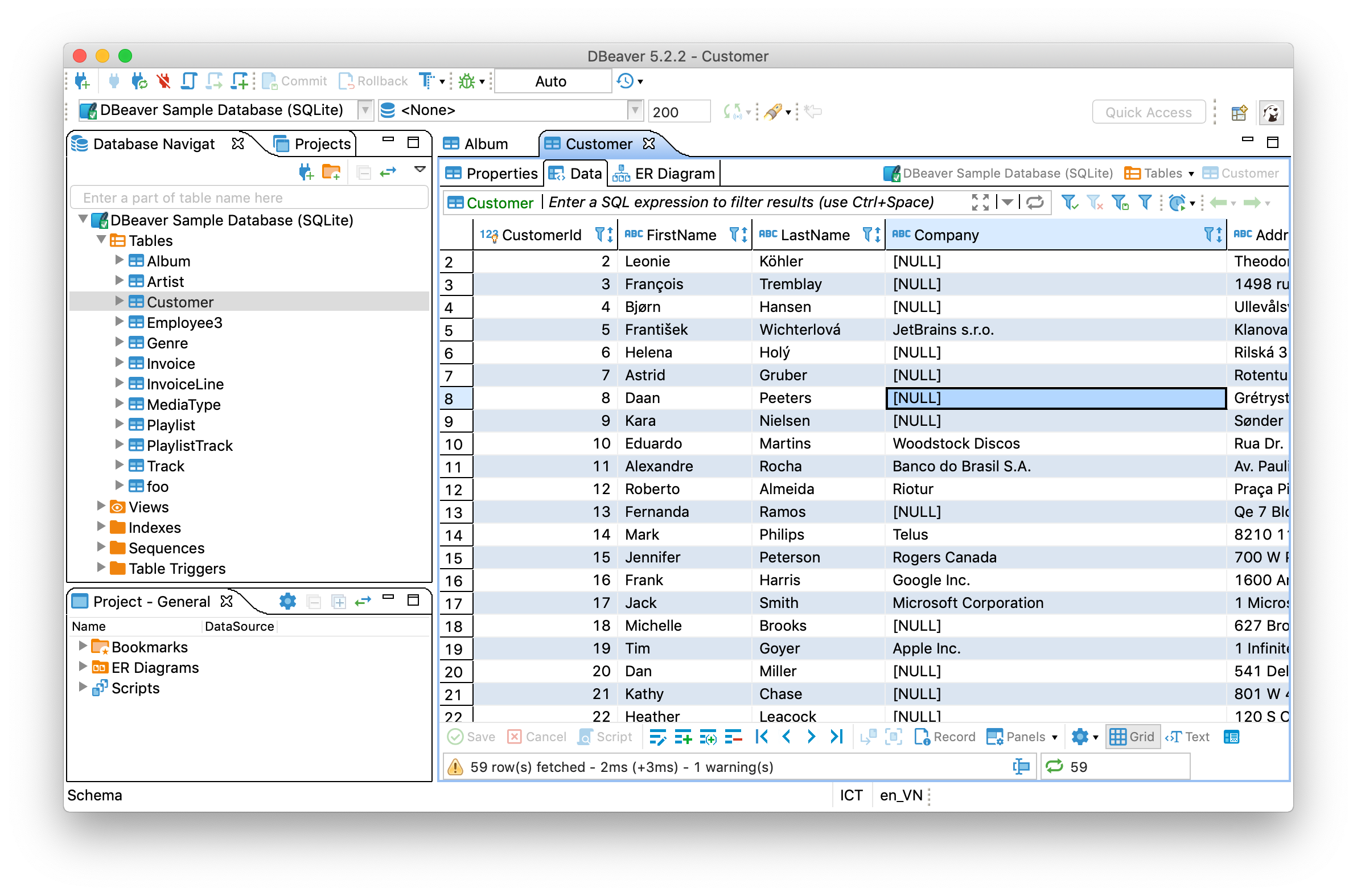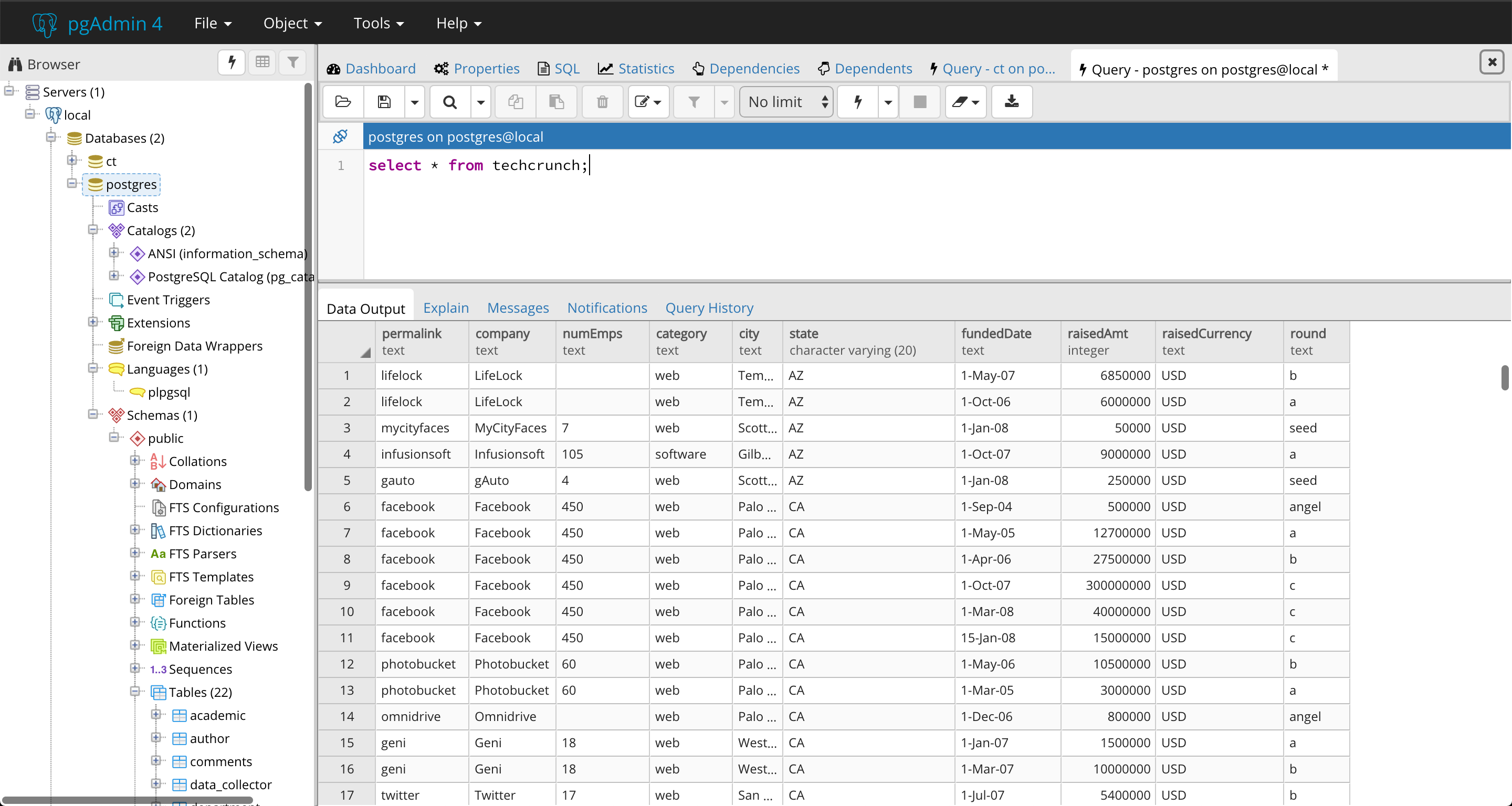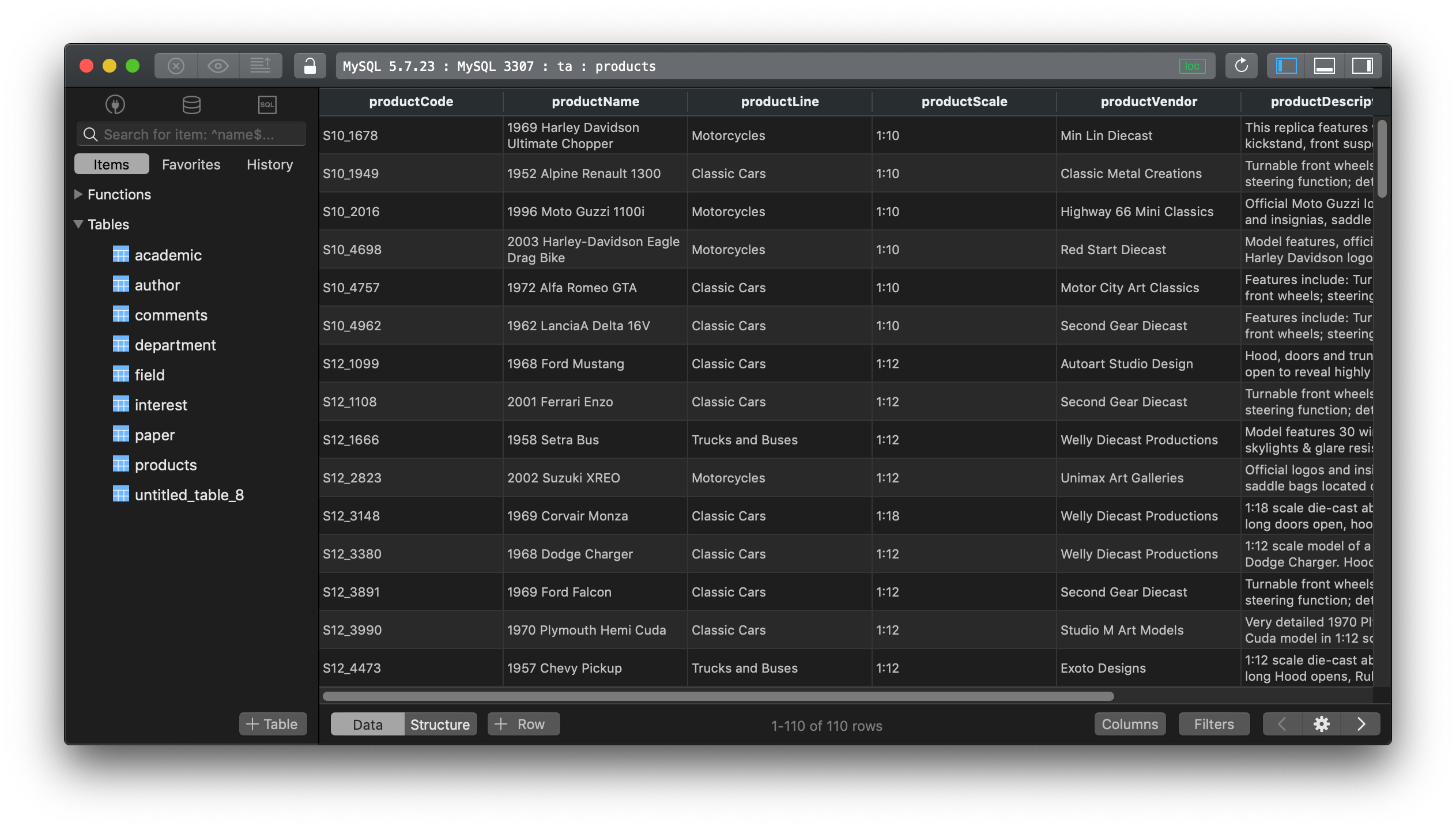DBeaver vs pgAdmin vs TablePlus - Quick Comparison
In this post, we are going to have a quick comparison between DBeaver, pgAdmin, TablePlus, with each tool’s pros and cons analysis. Let’s see which tool is better suited for your database management tasks.
1. DBeaver
DBeaver is a free universal database tool and SQL client, built based on Eclipse RCP platform.
-
Supported platforms: DBeaver works on all platforms supported by Eclipse framework, previously Windows, Linux, MacOS, Solaris, AIX, HP-UX. Starting from version 4.2, it limited its support to Windows, MacOS, and Linux only.
-
Supported Drivers: DBeaver community version can work with any database server which has JDBC driver (which means a lot of databases): MySQL, PostgreSQL, MariaDB, SQLite, Oracle, to DB2, SQL Server, Sybase, MS Access, Teradata, Firebird, Derby, etc. The enterprise adds support for non-JDBC data sources (WMI, MongoDB, Cassandra, Redis).
-
Pricing: DBeaver has a community version (DBeaver CE) which is free and open source. There’s also an enterprise edition (DBeaver EE) with more driver support, more advanced features and dedicated customer support for enterprises.

Pros:
- Cross-platform
- Multiple drivers support
- Assigning connection color
- Entity-relationship diagrams are available
- Built-in reformat SQL
Cons:
- It runs on a Java virtual machine, eats up a lot of RAM while running.
- Confusing icon design and somewhat unintuitive. Sometimes you don’t know where to look for what you need.
- Autocomplete is slow, and not so smart.
2. pgAdmin
pgAdmin is one of the most popular PostgreSQL database design and management tools.
-
Supported platforms: From the recent major update to pgAdmin 4, pgAdmin has become a web app, which can run on any computer with a web browser installed.
-
Supported Drivers: pgAdmin 4 works with PostgreSQL only. It works with PostgreSQL 9.2 and above.
-
Pricing: pgAdmin is a free and open source tool. Anyone can download pgAdmin from its website and use it for free.

Pros:
- It’s free.
- It can be easily deployed on any server and accessed remotely using any web browser.
- The UI is flexible and can be re-organized. The user interface elements are detachable panels that can be dragged around and re-arranged to be displayed stand-alone or in the tabbed browser.
Cons:
- It’s web-based.
- It only supports PostgreSQL.
- It’s slower to respond.
- It’s slower to start.
- It uses more resources
3. TablePlus
With a native build and a lightweight size, TablePlus is a very handy tool for managing multiple databases.
-
Supported platforms: TablePlus is built native for each platform. It started out with a native version for Mac, then another version for Windows, and a version for Linux was introduced recently as an alpha release. It also has an iOS version.
-
Supported Drivers: TablePlus supports a handful of relational databases: MySQL, PostgreSQL, SQLite, Microsoft SQL Server, Amazon Redshift, MariaDB, CockroachDB, Vertica, Oracle; and two popular NoSQL databases: Cassandra and Redis.
-
Pricing: TablePlus has a free version with full set of features which you can download and use forever, but there are some usage limitations. If you use it heavily, the license costs $59 to remove all those limitations.

Pros:
- Native build for each platform so it’s fast, lightweight, and stable.
- Clean and simple interface.
- Multiple drivers support
- Multiple conditions data filter
- Queries history and keyword binding favorite.
- Streaming results and async loading to show queries results faster and doesn’t block the UI.
- Very quick inline editing for table data and structure, you also can edit query results directly.
- Smart query editor with highlight syntax, instant autocomplete, SQL reformat.
- Multiple carets
- A plugin system to extend the app.
- Quick support. TablePlus releases new updates regularly and responds to users’ requests almost immediately.
Cons:
It currently lacks of some advanced features such as ER Diagram, database compare tool to Diff and Sync, etc.
4. Conclusion
Go with pgAdmin if you:
- Work with PostgreSQL only
- Prefer a web app over a desktop app
- Need to get the job done and don’t mind the performance & UX
- Need a tool that is completely free
Go with DBeaver if you:
- Work with all kinds of databases
- Prefer a an old-fashioned design with all function buttons on the UI.
Go with TablePlus if you:
- Are a fan of native experience
- Work with multiple databases
- Want a modern design with better usability
- Want quick support & development cycle.